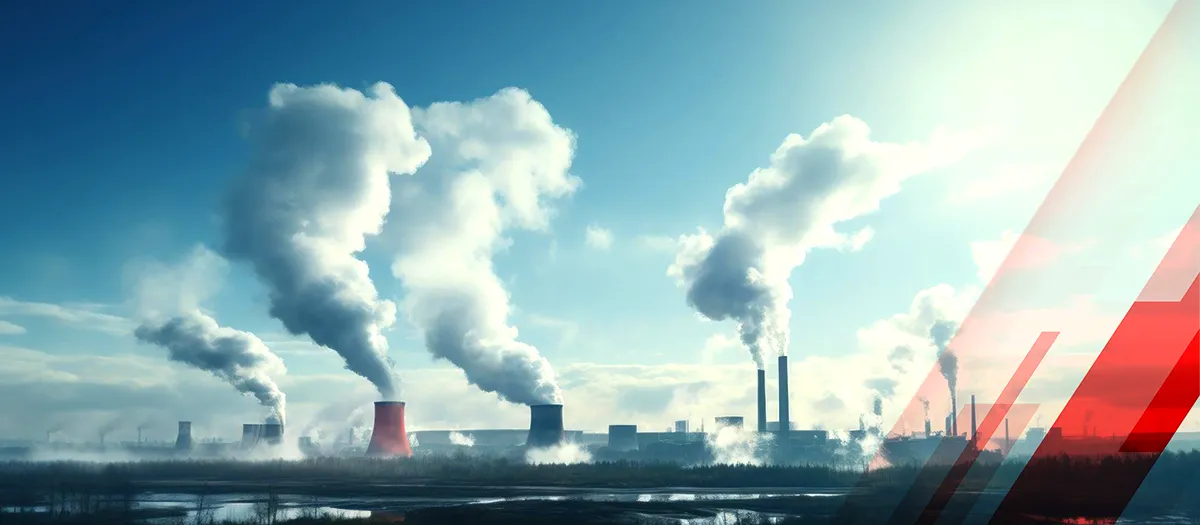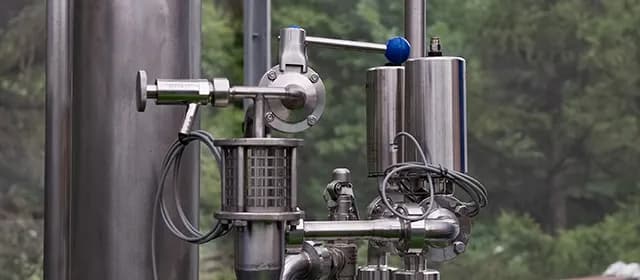Carbon dioxide (CO2) is a prevalent gas present on Earth's surface, essential for maintaining its air quality. While most people know CO2 primarily as a greenhouse gas emitted from vehicles burning fossil fuels and gasoline, it also offers various benefits for the Earth's health. As per the recent report released by Kings Research, the global carbon dioxide market is expected to generate revenue of 15.61 billion by 2030. In this blog, we will explore the benefits and properties of CO2, shedding light on its role in sustaining life on Earth.
Let's dive in!
Understanding Carbon Dioxide
CO2 consists of a single carbon atom bonded by a double covalent bond to two oxygen atoms. It is found in the gas state at room temperature, transforms to a liquid state under high pressure, and solidifies at temperatures colder than-78°C.
Key Properties of Carbon Dioxide
Physical Properties
- CO2 is a colorless gas.
- It is odorless and tasteless.
- CO2 exists as a gas at room temperature (20–25 °C)
- It is slightly acidic and non-flammable.
- It is denser than air and does not support either flame or animal life.
Chemical Properties
- Carbon dioxide: chemical formula CO2
- It is a stable compound.
- Typically, CO2 and water combine to form carbonic acid, which is a weak acid.
- When exposed to alkalis, it forms carbonates and bicarbonates.
- It can be dissolved in water, ethanol, and acetone.
Applications of Carbon Dioxide
CO2 finds applications across diverse industries. Here are some of the main uses of carbon dioxide:
- Fertilizer Production: CO2 is widely used in the fertilizer industry for the manufacturing of urea.
- Enhanced Oil Recovery: It is used in the oil and gas industry to enhance oil recovery, where it is injected into oil reservoirs to increase oil production.
- Refrigeration and Cooling: CO2 and solid CO2 are both commonly used as refrigerants or coolants for cooling purposes.
- Food and Beverage Industry: CO2 is extensively used as a preservative and antioxidant in food packaging, as well as for freezing and chilling food products.
- Medical Applications: Solid CO2 or dry ice is used for flash-freezing biological samples, removing growths, and providing refrigeration for vaccines. It is also used for assessing lung function in patients with respiratory diseases.
- Fire Suppression: CO2 is used as a fire suppression agent in certain applications, such as in fire extinguishers and systems for protecting sensitive equipment.
Role of Carbon Dioxide in Photosynthesis
CO2 for photosynthesis is considered one of the essential reactants. CO2 is absorbed by plants through tiny openings called stomata on their leaves. Inside the chloroplasts (plant cells), CO2 combines with water and light energy to produce glucose and oxygen. This process, known as the Calvin cycle, occurs in the stroma of the chloroplasts. The resulting glucose serves as the primary source of energy for plants and is also used to build other organic molecules necessary for growth and development. Therefore, CO2 acts as a fundamental building block for the creation of organic compounds during photosynthesis. The photosynthesis of plants creates the balance of CO2 and oxygen.
Will Our Planet Be Unlivable without Carbon Dioxide?
CO2 plays a vital role in the Earth's atmosphere as a heat-trapping gas, helping to trap heat and regulate our planet's temperature. This phenomenon, known as the greenhouse effect, is essential for supporting life on Earth by maintaining a stable climate. Additionally, CO2 is crucial for photosynthesis, the process by which plants convert sunlight into energy. Without CO2, plants would not be able to grow and produce oxygen, which is essential for all living organisms.
How is Carbon Dioxide Harmful to Humans?
CO2 is also generated by human activities, such as the burning of fossil fuels like gasoline, coal, oil, and wood. It is necessary for life on Earth and is not poisonous. High concentrations of CO2 can cause symptoms such as headaches, dizziness, shortness of breath, confusion, and in extreme cases, loss of consciousness or death. It is worth noting that the outdoor concentration of CO2 is generally around 400 parts per million (ppm) or higher in areas with heavy traffic or industrial activity, which is not considered hazardous to health.
Can Carbon Dioxide be Used as a Fuel?
CO2 has been explored for conversion into useful fuels, such as propane, butane, methane, and other hydrocarbon fuels. These fuels are made up of long chains of carbon and hydrogen. The conversion of CO2 into fuels is seen as a potential solution to reduce greenhouse gas emissions and mitigate climate change.
Several approaches have been developed to convert CO2 into fuels. One method is electrochemical reduction, which involves using a catalyst to assist the reaction. Researchers at Lawrence Berkeley National Laboratory have developed a new approach to modify the surface of copper catalysts, improving the selectivity and yield of carbon-rich products.
Additionally, researchers at the University of Cambridge have shown that biological catalysts, or enzymes, can produce fuels from CO2 using renewable energy sources. Their latest research has significantly improved fuel production efficiency, showing that carbon emissions can be turned into green fuels efficiently without wasting energy.
In a Nutshell
Carbon dioxide plays a significant role in the Earth's atmosphere. It is essential for photosynthesis and maintaining the planet's temperature, creating a suitable environment for living. With its potential, CO2 has a wide range of applications in several industries, such as healthcare, medical food and beverage, and oil. Moreover, it is being used to make usable fuels. In the future, we can expect more methods and approaches to mitigate the effects of CO2.




